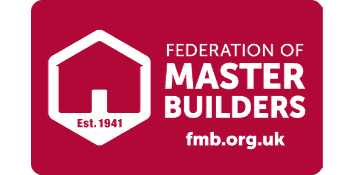Frequently Asked Questions
QDo you do painting or refit skirting boards once the work is completed?
Often the skirting boards do not come off intact due to the damp so we usually recommend new skirting. We will leave your property ready for painting and making good, including fitting new skirting boards, but do not offer this service ourselves. We can put you in touch with someone to refit new skirting and to do the painting.
QHow long does it take for the plaster to dry so we can paint and decorate?
With the most advanced system and products we use the drying time for painting can be as little as one week.
QWhat happens with all the rubbish and waste?
We will remove and dispose of all the waste and rubble, leaving your property as we found it.
QIs it safe to leave workmen in my home or property when i’m not there?
Yes. All our employees have been home vetted and are CRB/DBS check ready.
QWhat is covered in the 30 year guarantee?
There is no fine print or grey areas in the London Damp Specialist guarantee. The areas we treat will be covered against damp for 30 years – so if damp arises in the same area then it will be repaired at zero cost to the customer.
Frequently Asked Questions
QWhat is a DPC?
A Damp Proof Course (DPC) is a construction element used in buildings to prevent moisture or dampness from rising through walls and causing damage to the structure. It's a barrier typically installed horizontally within a wall or at the base of walls, just above ground level. The purpose of a DPC is to create a waterproof barrier that prevents groundwater, rainwater, or other forms of moisture from seeping upward through the building's walls.
Dampness in buildings can lead to various issues such as mould growth, rot, degradation of building materials, and even health problems due to the growth of mould and mildew. DPCs are essential for maintaining the structural integrity and overall health of a building.
DPCs can be made from various materials, including:
Bitumen-based materials: These are often in the form of sheets, membranes, or coatings that are applied to the wall or inserted into the wall during construction.
Plastic sheets or membranes: These are flexible sheets made from materials like high-density polyethene (HDPE) or polyvinyl chloride (PVC).
Metallic sheets: Thin metal sheets or foils can also be used as DPCs, providing a barrier against moisture.
Chemical treatments: Special chemical compounds can be injected into walls to form a barrier against rising dampness.
DPCs are usually installed during the construction of a building, but in some cases, they can be retrofitted to existing structures to address dampness issues. The placement and effectiveness of a DPC depend on factors such as the type of construction, the local climate, and the site conditions.
Overall, a Damp Proof Course is a crucial element in building construction to prevent the detrimental effects of moisture on the building's structure and inhabitants.
QAre DIY Damp Treatments Effective?
DIY damp treatments can work for minor issues and offer cost savings. However, they have limitations. Misdiagnosis, temporary solutions, potential damage, health risks, and lack of expertise are concerns. Professional damp specialists have specialised knowledge, equipment, warranties, and guarantees. For serious or persistent issues, consulting experts are advised to ensure accurate diagnosis, effective solutions, and long-term prevention.
QAre there any household methods of getting rid of mould I should consider?
While there are household methods of getting rid of small-scale mould we would urge you to keep in mind that For larger or persistent mould issues, it's best to consult with our professionals to ensure proper remediation. That said, here are some steps you can take:
Ventilation and Dehumidification: Proper ventilation helps reduce moisture buildup, which is essential for mould growth. Use exhaust fans in bathrooms and kitchens and ensure good airflow throughout your home. Dehumidifiers can also help lower indoor humidity levels.
Regular Cleaning: Regularly clean and dry areas prone to moisture, such as bathrooms and kitchens. Wipe down surfaces to prevent moisture accumulation.
Baking Soda: Baking soda is a mild abrasive and can help scrub away surface mould. Mix it with water to create a paste and apply it to the affected area, then scrub gently.
Vinegar: White vinegar has natural anti-fungal properties. Spray undiluted white vinegar onto mouldy surfaces and let it sit for a while before wiping it clean.
Hydrogen Peroxide: Hydrogen peroxide is effective against mould and mildew. Use a 3% solution (typically found in most drugstores) and spray it on the mouldy area. Let it sit for 10 minutes, scrub, and wipe clean.
Tea Tree Oil: Tea tree oil is a natural fungicide. Mix a teaspoon of tea tree oil with a cup of water and spray it on mouldy surfaces. Do not rinse.
Sunlight: Sunlight helps kill mould and mildew. If possible, move mouldy items to a sunny area for a few hours.
Prevent Water Intrusion: Fix any leaks or water intrusion issues immediately to prevent moisture buildup that promotes mould growth.
Important Notes:
Safety: When using household remedies, ensure proper ventilation and wear gloves and a mask to protect yourself from mould spores.
Testing and Severe Cases: If mould covers a large area or keeps returning, it's best to consult professionals. They can identify the extent of the problem and take appropriate actions.
Again, we cannot stress this enough– these steps are only for small-scale issues. But with serious mould infestations, we urge you to give us a call so that we can take care of it without putting the health of your household at risk as this can become a dangerous situation.***
QAre there insurance options that cover damages caused by rising or penetrating dampness?
While some insurance providers might offer that, it would be best to check with your carrier. They will be able to provide you with a more accurate answer on this matter.
QDo I need to vacate my home during the damp treatment process?
At London Damp Specialists, we prioritise your safety and comfort. For minor treatments, there's usually no need to vacate your home. However, in cases requiring more extensive or invasive solutions, we might recommend temporary evacuation to ensure effective treatment and your well-being. We'll communicate clearly about the process and options, keeping you informed every step of the way. Your satisfaction and safety are our utmost concern.
QDo I need to do any post-damp-treatment care for my house after you finish the work?
Ensuring the success and longevity of damp treatment requires some post-treatment care on your end. Here's what you should consider:
Ventilation: Keep rooms well-ventilated to prevent moisture buildup.
Heating: Maintain a consistent indoor temperature to prevent condensation.
Regular Cleaning: Clean surfaces to prevent mould and dust buildup.
Humidity Control: Monitor and maintain indoor humidity levels.
Prompt Repairs: Address leaks and plumbing issues promptly.
Landscape Drainage: Ensure proper landscaping for good drainage.
Inspections: Periodically check treated areas for issues.
Follow Advice: Adhere to maintenance recommendations from specialists.
Appliance Ventilation: Ensure proper ventilation for appliances.
Check External Factors: Monitor external factors that caused the issue.
Professional Checks: Schedule periodic inspections for ongoing protection.
QAre old buildings more susceptible to damp issues than new ones?
Yes, older buildings are more vulnerable to damp issues than newer ones due to factors like outdated materials, lack of modern damp-proofing, wear and tear, less efficient ventilation, reduced insulation, historic designs, potential foundation problems, and maintenance challenges. Newer buildings are typically constructed with better materials and techniques for damp prevention. However, older buildings can still be protected by addressing vulnerabilities through maintenance and modern treatments.
QCan wallpaper and paint hide damp issues?
Yes, wallpaper and paint can temporarily conceal damp issues, but they worsen over time and promote mould growth. They don't address the underlying problem of moisture. It's crucial to identify and fix the source of dampness for long-term solutions.
QCan landscaping and drainage around my home affect dampness?
Yes, landscaping and drainage around your home have a significant impact on dampness. Proper slope, well-maintained gutters, effective drainage systems, and strategic vegetation placement all help prevent excess moisture from affecting your home's foundation. These measures play a crucial role in reducing the risk of damp issues and promoting a dry living environment.
QAre there eco-friendly damp treatment options I can look into?
Yes, absolutely. Here are a few options you might want to consider:
Natural Ventilation: Enhance airflow to control humidity.
Energy-Efficient Dehumidifiers: Maintain indoor moisture levels.
Plant-Based Solutions: Use oils like tea tree or neem for cleaning.
Silica Gel: Absorb excess moisture naturally.
Clay-Based Products: Environmentally friendly paints and plasters.
Recycled Materials: Incorporate damp-resistant sustainable materials.
Certified Products: Look for eco-friendly certifications.
Proper Landscaping: Prevent water accumulation around the home.
Specialist Services: Consult eco-focused damp specialists.
What happens next?
Call London Damp Specialists on 020 7458 4864.
Alternatively, you can book a survey online by completing your details below.
Once you have submitted the form, one of our surveyors will be in touch with you to discuss your problems within 24 hours.
Your free, no obligation damp survey will typically only take between 15 to 30 minutes.
30 year guarantee We also offer a 10 year insurance backed guarantee.
Free damp survey No obligation survey with detailed reports and quotations
Experienced & qualified Team qualified to industry standards (CSRT & CSSW)
Fully insured Public liability limit of indemnity £5million






